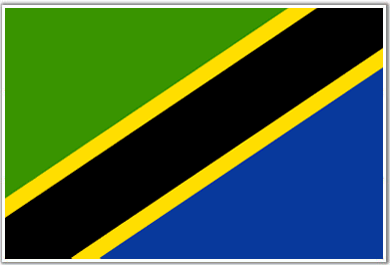TREQUARTISTA
FORMATIONS, STRATEGIES AND TACTICS
TANZANIA 2 - 0 SUDAN: Dominant first half from Kilimanjaro stars




Two first half goals from Bocco gave Kilimanjaro stars a winning start, producing a dominant the first half and a rather subdued performance in the second.
There was a surprise in terms of midfield selection. Salum start ahead of Kiemba, partnering Domayo as the two pivots in the 4-2-3-1 formation. This selection was slightly puzzling bearing in mind that Salum missed the early part of the season due to injury and that he usually played behind Bocco and Kipre Tchetche as a play maker and not a pivot. The rest of the team was as expected. Sudan were deployed in a 4-1-3-2 formation.
4-2-3-1 VS 4-1-3-2
It was inevitable that Kilimanjaro stars would dominate possession once the formations were clear. Having a spare man in midfield meant that they could dominate the centre of the pitch. Mohamend stuck on Kazimoto who played behind Bocco, performing almost a man marking job on him. The three playing in front of Mohamed found it hard to provide cover across the width of the pitch, often concentrating on covering the centre leaving Nyoni and Maftah free.
With an advantage out on the wings, Kilimanjaro stars looked for balls out to the wings, setting Ngassa and Mvusa on the run behind the Sudanese defense. Salum and Domayo often had time on the ball and the real battle of interest was between Kazimoto and Mohamed. Several times Kazimoto managed to escape his tight marking, receive the ball and set a through ball. First was for Msuva who failed to hit the target and the second, Mohamed’s failure to track Kazimoto’s off the ball run set Ngassa up to cross for Bocco to score.
Sudan found it hard to develop any fluidity in their play, as their midfield was outnumbered with Kazimoto dropping deep transforming the formation into a 4-4-1-1 during the defensive phase. Failing to go through the centre, Sudan were forced to go long, managing to fashion half chances from free kicks they won. The second goal came as Sudan tried to play out from the back. The right back had pushed forward in an attempt to provide width. Sudan got dispossessed in midfield and ball into space found Ngassa who found Bocco.
Second half:
At the start of the second half, Poulsen made like for like change Kiemba for Salum who had been booked in the first half, while Ngassa and Msuva switched wings. The major tactical shift was that Kilimanjaro stars no longer dominated possession as the first half. The formations remained the same but this can be attributed to the fact that Kaseja kept taking goal kicks which Sudanese players won. Secondly, the left back, Faris showed more attacking intent down the flank.
Conclusion:
Kilimanjaro Stars’ win can be attributed solely to the inherent weakness of the 4-1-3-2 formation. What makes football tactics interesting is the fact that in trying to solve one problem, you inevitably create another. In this case, Sudan being a man light in central midfield drew the wingers centrally so as to negate Star’s superiority in this part of the field, opting to create width with their fullback. In doing so, exposed themselves to a quick counter attacks. The holding midfielder didn’t do a particularly good job on Kazimoto being outwitted on several occasions. It is in fact for this very same reason why the 4-2-3-1 came into existence. The double pivot ensures that there is enough cover when the opposition playmaker drags the defensive midfielder away or escapes his marking. It will be interesting to see if Sudan will continue with this system for the remainder of the games.